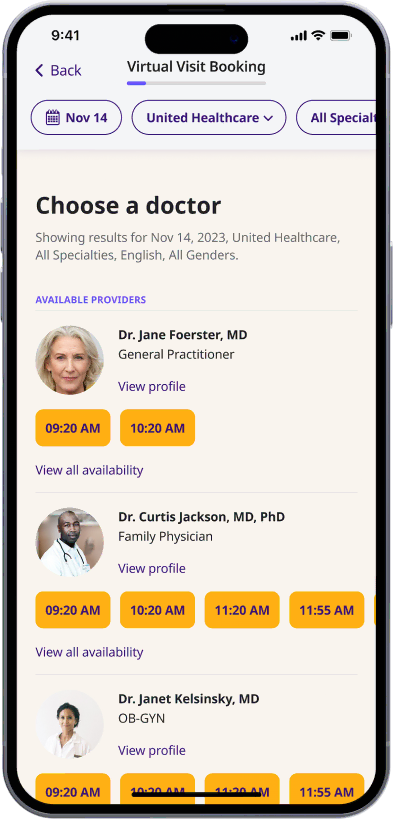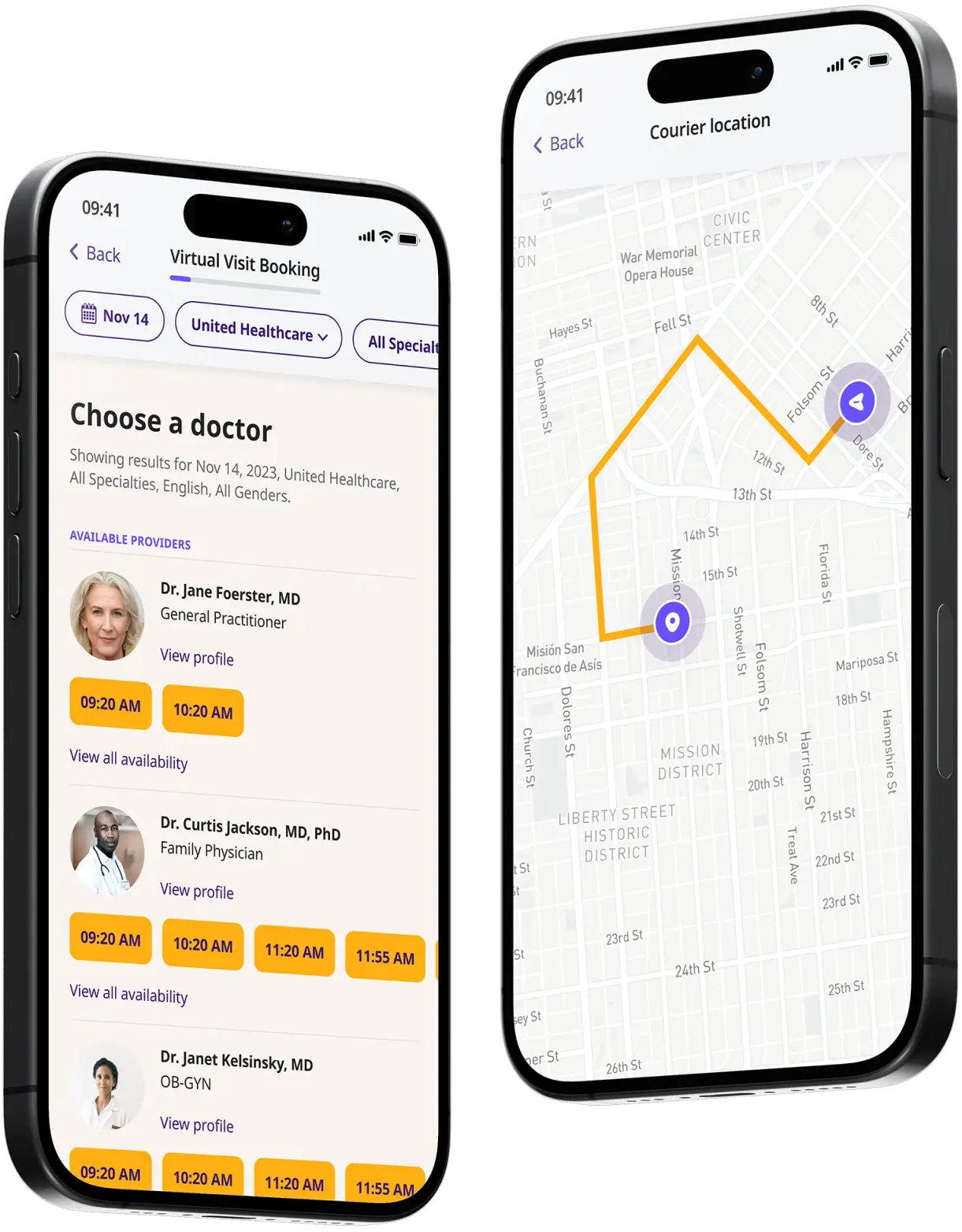Get an Augmentin Prescription Online
Get a prescription for Augmentin (amoxicillin/clavulanate) now! Our doctors are available 24/7 in all 50 states.


Available in 50 states. Insurance accepted.
Fast
virtual visits
24/7 care
assistants
Prescriptions
as needed



See If Delivery Is Available Near You
Delivery Not Available
Enter your ZIP code to check if prescription delivery is available in your area and how soon your meds could arrive.
How to get started
Choose your doctor, start a virtual visit, and have your prescriptions sent to your preferred pharmacy for pickup — all in just a few easy steps.
Choose a doctor
Choose a physician by availability, specialty, ratings, and more.

Start a video call
Get connected with a doctor anytime, anywhere.

1-Hour Rx Delivery
Your prescription delivered to your door in 1 hour or less.

Available in 50 states. Insurance accepted.
One-Time
Physician Visit
One-time visit with a physician for diagnosis, treatment, Rx, labs, referrals, and doctor’s notes.
Accepted Insurances
See why people turn to DrHouse...
As seen in

Amoxicillin/clavulanate (Augmentin)
Amoxicillin/clavulanate, known by its brand name Augmentin, is a prescription antibiotic prescribed to treat bacterial infections. It contains a combination of the active ingredients amoxicillin and potassium clavulanate.
Augmentin belongs to the penicillin class of antibiotics (because of amoxicillin) and the beta-lactamase inhibitors (due to potassium clavulanate). It is available as regular and extended-release tablets or a liquid suspension.
Augmentin is considered a broad-spectrum antibiotic, meaning it is effective against a wide range of bacteria types. Broad-spectrum antibiotics are often prescribed in cases where multiple types of bacteria may cause an infection, or if the doctor suspects that more than one strain is causing an infection at the same time.
How Does Augmentin Work?
As a combination drug, there are two mechanisms of action for Augmentin.
Amoxicillin prevents bacteria from making cell walls, which is their outer layer of protection. When the cell wall is damaged, the pressure inside the bacteria cell can grow until the membrane bursts, killing the bacteria. However, some bacteria can make proteins called beta-lactamases, which break down amoxicillin.
Potassium clavulanate is added to amoxicillin to help prevent bacteria from becoming resistant to amoxicillin. As a beta-lactamase inhibitor, potassium clavulanate prevents the beta-lactamase from working, which keeps amoxicillin from being broken down and allows it to fight the infection.
What Is Augmentin Used For?
Augmentin is prescribed to treat a range of bacterial infections, including:
- urinary tract infections
- sinusitis
- bronchitis
- pneumonia
- ear infections
- skin infections
This list is not complete, and Augmentin may be prescribed to treat a condition that is not listed.
How to Take Augmentin?
When prescribed Augmentin, it is crucial to take it exactly as your doctor prescribes, including the type of tablet specified (regular or extended-release), the dosage, and the scheduling.
Your symptoms may improve shortly after starting Augmentin, but you should still take the antibiotic for the entire prescribed length. It’s common for symptoms to improve before the infection is completely gone, and discontinuing the medication early increases the risk of antibiotic resistance or a recurrent infection occurring.
For those taking the extended-release tablet, do not crush or chew it––swallow the pill whole, or, if the whole pill is too large, you may break it in half and then take both halves at the same time. Talk to your doctor if the half pill is still too challenging to swallow.
If you have been prescribed the liquid suspension, shake it before measuring a dose. Use only a medicine dose-measuring device or the provided dosing syringe to measure out the correct amount.
Avoid taking Augmentin with or immediately after eating a high-fat meal, as this can make it harder for the body to absorb the medicine.
In the case of a missed dose, take the dose as soon as you notice unless it is almost time for the next dose. If this is the case, skip over the missed dose––you should never take two doses at the same time to compensate for a missed dose.
In the United States, amoxicillin/clavulanate is available under the following brand names:
- Augmentin
Common side effects associated with amoxicillin/clavulanate may include:
- Nausea
- Vomiting
- Diarrhea
- Mild rash or itching
More serious side effects which should be reported to your healthcare provider immediately may include:
- Severe rash
- Hives
- Difficulty breathing
- Difficulty swallowing
- Wheezing
- Vaginal itching
- Vaginal discharge
- Yellowing of the skin or eyes
- Severe abdominal pain
- Bloody diarrhea
- Fever
- Easy bruising or bleeding
The above lists of possible side effects associated with amoxicillin/clavulanate are not exhaustive and other side effects may occur. If you experience any severe or persistent side effects while taking amoxicillin/clavulanate, it is important to contact your healthcare provider right away.
There may also be some severe drug reactions to Augmentin. Contact your doctor immediately if you experience a fever, skin rash, swollen glands, unusual bruising, yellowing of the skin or eyes, muscle aches, little or no urination, loss of appetite, or dark-colored urine.
Furthermore, some people may be allergic to Augmentin or experience a severe skin reaction. Seek emergency help if you have hives, swelling in the throat or face, difficulty breathing, burning eyes, red or purple skin rash, peeling and blistering skin.
It is important to note that some drugs, including allopurinol, probenecid, or blood thinners, can interact with Augmentin, and you should inform your doctor if you take any of these.
Frequently Asked Questions About Augmentin (Amoxicillin/Clavulanate)
Do You Need a Prescription for Augmentin?
Augmentin (amoxicillin/clavulanate) is a prescription antibiotic medication that is commonly used to treat bacterial infections. Augmentin is not available over the counter and a valid prescription from a licensed healthcare professional is required to get it.
Can You Get an Online Prescription for Augmentin?
Yes, you can get an online prescription for Augmentin from DrHouse. Our licensed healthcare professionals will review your medical history and symptoms to determine if augmentin is the appropriate treatment for you
Can I Get a Prescription Refill for Augmentin From DrHouse?
It depends on your specific situation and the discretion of the physician. Antibiotics aren’t usually refilled, as they are typically taken for a short period until the infection clears up.
However, if your condition requires additional treatment with Augmentin, our physicians may refill your prescription after a virtual consultation to assess your ongoing needs.
For more detailed information about amoxicillin/clavulanate (Augmentin), you can refer to the following sources:
Related services
Explore more of our services tailored to your needs and discover additional ways we can support your healthcare needs.
Frequently asked questions



